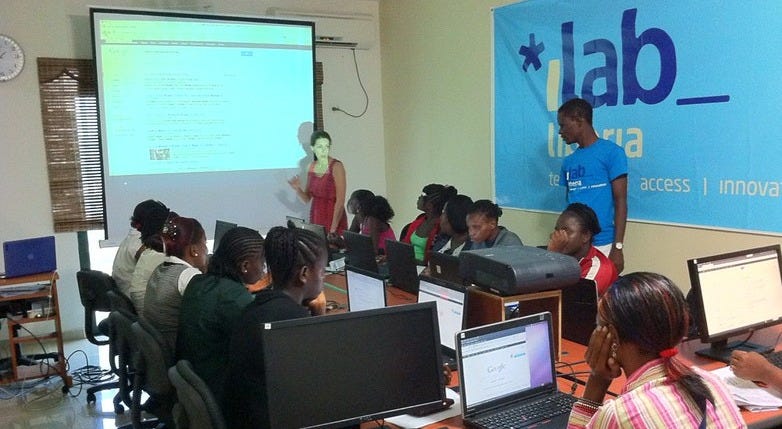In our previous Engineering Serendipity posts (here and here), we explored a powerful idea: transformation doesn’t always begin with a plan - it often begins with a connection. A bright graduate meets an investor at a tech meet-up. A startup advisor introduces a founder to an overlooked distribution channel. These moments of serendipity, when preparation meets opportunity, often determine whether ecosystems thrive or stall.
But serendipity, by nature, is elusive. It resists structure. And yet, as I learned studying under Dr. Christian Busch at NYU (he literally “wrote the book on it”) and through my capstone work on role-based network models, we can, in fact, engineer it. Not perfectly. Not universally. But we can build systems that increase the probability of impact.
That’s the heart of Vumbua, Swahili for discover, our AI-powered platform designed to operationalize serendipity in startup ecosystems, particularly in emerging markets.
Built on field-tested research from cities in Africa like Kigali and Monrovia, and grounded in complexity theory and social capital analysis, Vumbua offers a triple-use capability for development actors, investors, and ecosystem builders.
1. Map the Invisible: Structural Social Capital in Focus
One of the most persistent challenges in development work is visibility. Ecosystem maps tend to be either too abstract, offering top-down scores from distant evaluators, or too narrow, listing disconnected service providers without insight into their relationships.
Vumbua changes that by building role-based network maps. Instead of focusing on individuals, we map the roles and functions within an ecosystem -investors, incubators, educators, legal support, dealmakers - and the linkages between them. This approach allows us to quantify structural social capital: the connections that determine whether ideas move or stagnate, whether capital flows or bottlenecks.
In my own research comparing Kigali and Monrovia, we saw stark differences not just in the number of organizations but in their network density. Kigali’s ecosystem was more interconnected, featuring more roles, more shared affiliations, and more cross-functional ties. These are the ingredients that allow serendipity to scale.
Vumbua automates this mapping, pulling data from interviews, reports, and open-source materials, so that planners can see not just what exists, but how it’s connected.
2. Simulate the Future: Strategic Foresight at Work
Data is only as powerful as what you can do with it.
Vumbua doesn’t stop at mapping. Our second capability under development is a simulation interface that allows users to test ecosystem interventions before they commit time, money, or political capital.

Want to understand the effects of adding a co-working space to a weak node? Curious what happens if early-stage capital increases but mentorship remains low? Vumbua models second- and third-order effects, helping leaders avoid unintended consequences and target efforts with the greatest systemic leverage.
This kind of network-based foresight is drawn directly from my capstone methodology: not just mapping nodes, but analyzing how role-pairs contribute to ecosystem vibrancy. In Kigali, for example, the connection between business advisors and technical training roles stood out as a key differentiator from less mature systems.
When we can model these dynamics, we move from reactive planning to anticipatory design—the kind of thinking that gets ahead of disruption.
3. Scale to the Edge: Built for Real-World Constraints
Most development platforms assume ideal conditions - stable internet, high-quality data, interoperable systems. But the places that need the most help often lack all three.
That’s why Vumbua is designed for local-first deployment. Its AI agents run in low-bandwidth environments and don’t require pristine datasets. Whether you’re working in a capital city or a frontier market, Vumbua adapts.

This makes it especially suited to work beyond the usual suspects—not just in Nairobi or Lagos, but in Kisumu, Tamale, or Livingston. And because we model roles rather than individuals, the system is resilient to staff turnover and institutional churn.
Why It Matters
Over $2.5 trillion has been spent on economic development in emerging markets since World War II, with mixed results. As Dr. William Easterly, Co-director of the NYU Development Research Institute has noted, aid often measures its own volume, not its impact.
What if we re-centered the conversation, not just on funding, but on ecosystem design?
What if, instead of focusing on “missing middle” capital alone, we focused on missing connections - on building the scaffolding of social capital that allows human and financial capital to flourish?
Vumbua was built for that purpose.

Let’s Build Smarter Ecosystems, Together
If you’re a policymaker, donor, accelerator, or investor working in emerging markets, we invite you to join us.
Vumbua is more than a tech tool. It’s a new lens on development - one that starts with roles, relationships, and the flow of opportunity.
This platform builds directly on real-world research from startup hubs in places like Kigali, Accra, Dar es Salaam, and Monrovia, integrating insights from NYU research under Dr. Jens Rudbeck, and shaped by the serendipity science of Dr. Christian Busch.
Together, let’s stop reacting and start discovering. Let’s use AI and network science not just to visualize what is, but to design what could be.
👉 Interested in piloting Vumbua in your ecosystem? Let’s talk.





